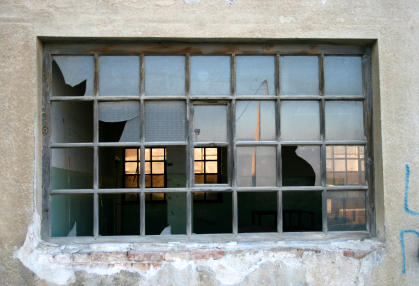Empty commercial property: could self storage be the best option?

Despite protests, in his April Budget this year George Osborne confirmed that the government was going to abandon a moratorium on an unpopular measure introduced by the Labour government in 2008: that empty commercial properties – formerly exempt – would now be charged the full business rate. It’s apparently worth about £1.2 billion in revenue.
In addition, the threshold has dropped, from commercial properties with a rateable value of £18,000 to just £2,600 – which now embraces just about all commercial properties.
Victims will receive a slight respite: a commercial property may be empty for three months before rates become chargeable; and in the case of industrial and/or warehouse properties, the exemption period is six months.
Anger
There has been an angry response to this development from the owners of commercial property and their representative bodies. The government is asking them to fork out large sums at precisely the time when their income from rent is reduced to zero. During a recession, this is likely to hit an increased number of owners, many of whom simply cannot find new tenants for their empty properties.
There is one sure way to avoid the tax: demolition. As the Taxpayers’ Alliance – who campaigned against the measure prior to the Budget – warned: “The number of empty commercial properties is very high, so without relief there are likely to be more demolitions.”
Another government initiative
Meanwhile the Department of Communities and Local Government has recently come up with another cunning plan for all those empty commercial properties: convert them into homes.
A public consultation (closing on 30 June) asks for submissions to the proposal: “Relaxation of planning rules for change of use from commercial to residential.”
More specifically, this applies to changing properties with Class B usage (business, general industrial, distribution and storage) into Class 3 (dwelling houses). Potentially that might provide 250,000 new homes – much needed, according to the Home Builders Federation, which estimates that England needs a million new homes to fill the housing gap, and should build 232,000 a year to catch up.
Self storage: a third way
Converting empty industrial properties and warehouses into residential property is, of course, a major undertaking, requiring considerable investment.
In terms of building work, it is far easier to convert to self storage. Indeed, if income from units brings in £1500 to £2000 per year for 100 square foot, the yield could be comparable to residential letting.
Owners of empty commercial properties will certainly not be happy to fork out for business rates while they have no income from their asset. They are unlikely to prefer demolition. And they may not wish to consider conversion to residential property, regardless of the outcome of the Department of Communities and Local Government’s consultation and deliberations.
Self storage could be a simple and profitable solution. There are several companies specifically set up to design, supply and deliver self storage conversions. Have a look for instance at these three companies, both of whom deliver complete, start-to-finish “turnkey” services: Steel Storage, AskActive, and Cavale.
Leave a Reply
Subscribe to This Blog
Get new blog posts sent to you by subscribing to RSS updates or to email updates.






